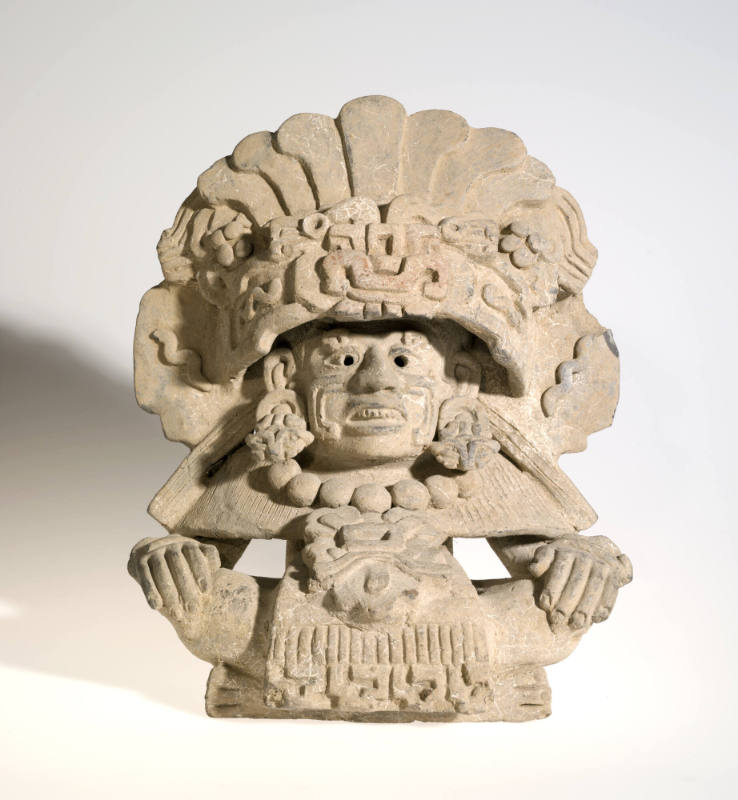

Object Details
Culture
Zapotec (Mexico)
Date
A.D. 750-1200
Medium
Ceramic, buff color
Dimensions
Height: 15 inches (38.1 cm)
Credit Line
Gift of the Dr. Sidney Tamarin, Class of 1930, Trust
Object
Number
2000.130
BRIEF DESCRIPTIONThis is a ceramic Zapotec funerary urn with an elaborately dressed figure on the fr(…)
BRIEF DESCRIPTIONThis is a ceramic Zapotec funerary urn with an elaborately dressed figure on the front.WHERE WAS IT MADE?This urn was made in what is now the state of Oaxaca, in Mexico. This region was once the center of the Zapotec civilization.HOW WAS IT MADE?This urn was likely made using a combination of clay hand-building and modeling techniques, as well as mold-made elements. The vessel behind the figure could have been formed from a flat, rolled out slab of clay, set upon a flattened clay disc.HOW WAS IT USED?This is an example of a funerary urn. The use of the term funerary does not mean that human remains were placed in them (no Zapotec urns have been discovered containing human remains). Instead, it refers to where these urns were placed: at the entrances to or within tombs. Most urns have been found empty, and show no signs of burning or use with fire, so were likely used to hold perishable funerary offerings of foods and beverages such as maize beer or pulque, an alcoholic drink made by fermenting maguey (agave).WHY DOES IT LOOK LIKE THIS?Notice the face of the figure on the front of the urn. The figure is probably a fertility god. However, the standardized faces on many of these urns may represent portraiture of an actual person. This urn is one of a nearly identical pair with another funerary urn in the Johnson Museum’s collection. To see it, search for object number 2000.131 in the keyword search box. If you compare the nose of this figure to the other, you will notice that this figure lacks the nose ornament that covers the nose of the other figure. Notice the figure’s elaborate adornments, such as jewelry, a large headdress, and a shoulder cape.












